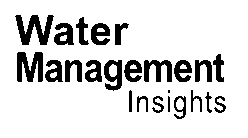In the heart of Chennai, India, a groundbreaking study is reshaping the way we think about heavy metal removal from wastewater. Led by Saghya Infant Shofia from the Department of Biotechnology at Saveetha School of Engineering, this research delves into the world of sustainable separation technologies, offering a beacon of hope for industries grappling with metallic pollutants.
The energy sector, in particular, stands to gain significantly from these advancements. Heavy metals like lead, cadmium, and mercury are notorious for their toxicity and persistence in the environment. Traditional methods of removal, while effective, often come with hefty price tags and environmental trade-offs. “The challenges we face with conventional techniques, such as high operational costs and secondary waste generation, necessitate the exploration of more sustainable alternatives,” Shofia explains.
The study, published in the journal ‘Sustainable Chemistry for the Environment’ (which translates to ‘Sustainable Chemistry for the Environment’ in English), evaluates both physical and chemical methods for heavy metal removal. It assesses their efficiency, cost-effectiveness, and sustainability, providing a comprehensive overview of the field.
One of the key highlights of the research is its in-depth analysis of emerging remediation technologies. Advanced electrochemical treatments, bioadsorbents, and hybrid approaches are all under the microscope. The findings are promising, with nanomaterial-based adsorbents showing remarkable potential. For instance, graphene oxide has demonstrated over 90% removal efficiency for lead and cadmium, offering high adsorption capacities and improved regeneration potential.
But the story doesn’t end with nanomaterials. The study also emphasizes the need for a shift from synthetic wastewater studies to real-world industrial effluents. This practical approach ensures that the solutions developed are not just theoretically sound but also commercially viable. “Future research should prioritize eco-friendly, cost-efficient materials with high selectivity and recyclability,” Shofia asserts.
The implications for the energy sector are vast. As industries strive to meet increasingly stringent environmental regulations, sustainable heavy metal removal technologies could provide a competitive edge. They could reduce operational costs, minimize environmental impact, and enhance brand reputation.
Moreover, the study’s focus on real-world applicability could accelerate the commercialization of these technologies. By bridging the gap between lab and field, Shofia and her team are paving the way for a future where heavy metal pollution is no longer a barrier to sustainable energy production.
The research also underscores the importance of interdisciplinary collaboration. By bringing together insights from biotechnology, environmental science, and engineering, Shofia and her team have created a roadmap for future developments in the field. As we stand on the cusp of a new era in water treatment, their work serves as a testament to the power of innovation and perseverance.
In the coming years, we can expect to see more eco-friendly, cost-efficient materials making their way into industrial wastewater treatment processes. Biopolymer-based flocculants and functionalized membranes, for example, could become the norm, thanks to their high selectivity and recyclability. The energy sector, in particular, is poised to benefit from these advancements, as it seeks to balance economic growth with environmental sustainability.
As we navigate the complexities of the 21st century, one thing is clear: the future of water treatment is sustainable, and it’s happening right now, in labs and research institutions around the world. With pioneers like Saghya Infant Shofia leading the charge, the prospects for a cleaner, safer world are brighter than ever.
